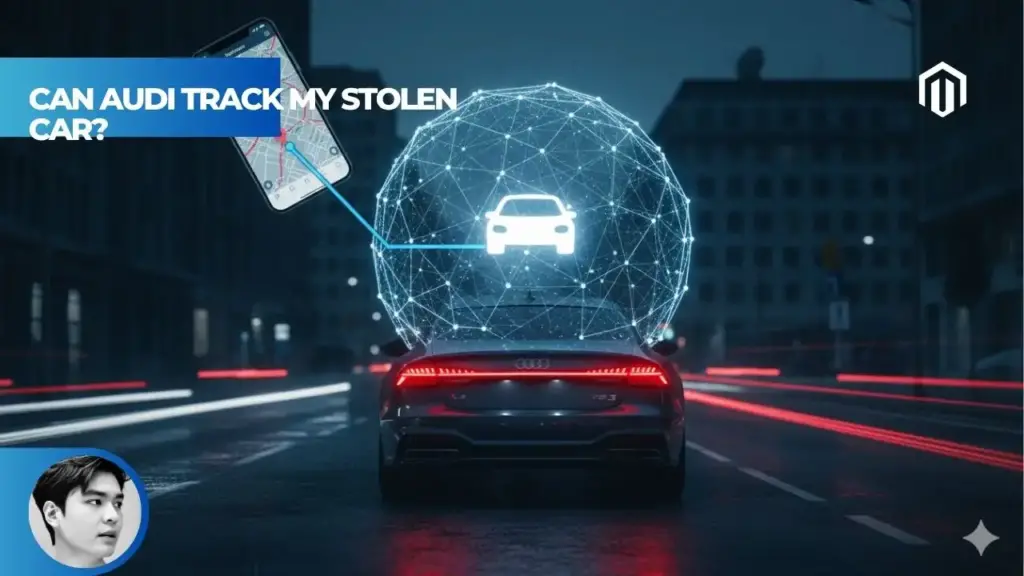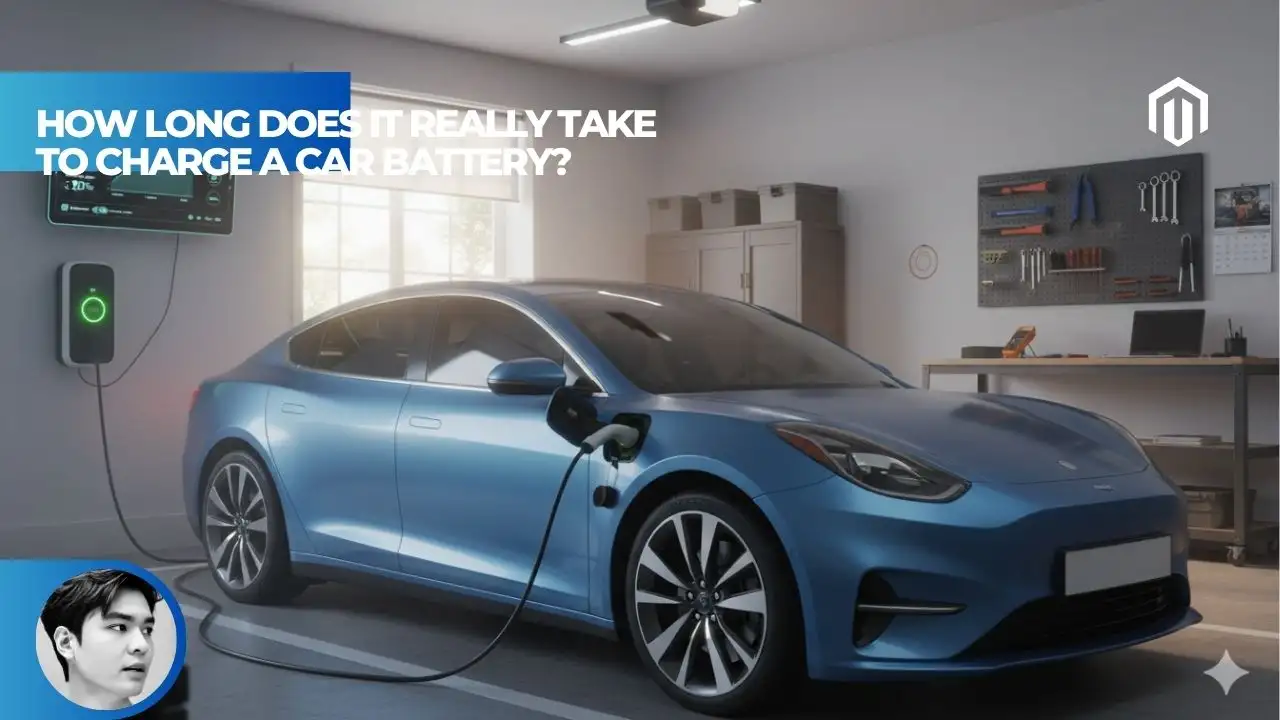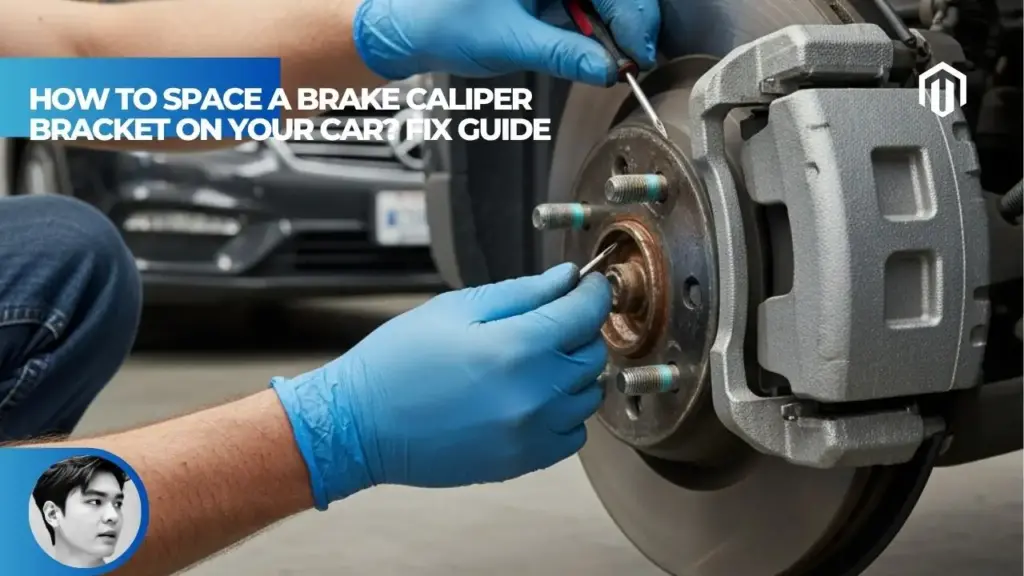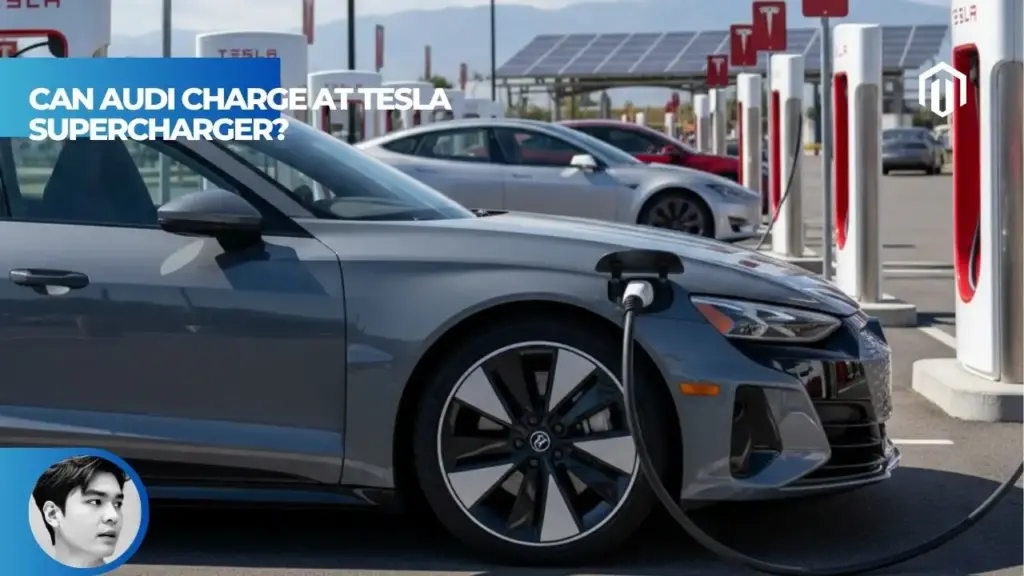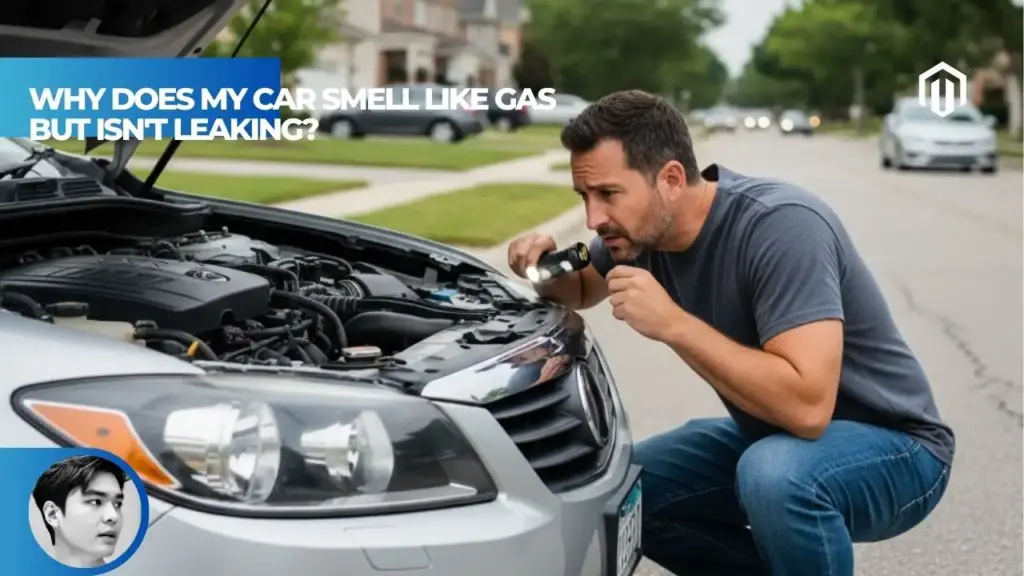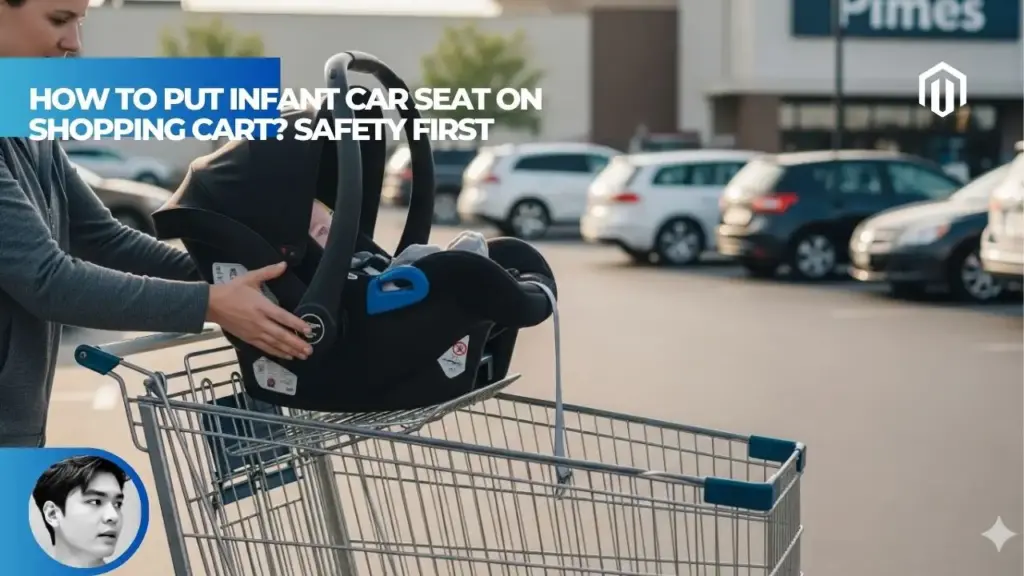You may also like:
Yes, Audi can track your stolen car through the Audi connect Stolen Vehicle Locator feature, which requires an active subscription, a police report with case ID, and works by sharing GPS location data directly with law enforcement. The service comes included with Audi connect CARE, which is complimentary for 10 years on new vehicles, and recovery is coordinated through Audi’s 24/7 call center at 1-877-210-9423[1].
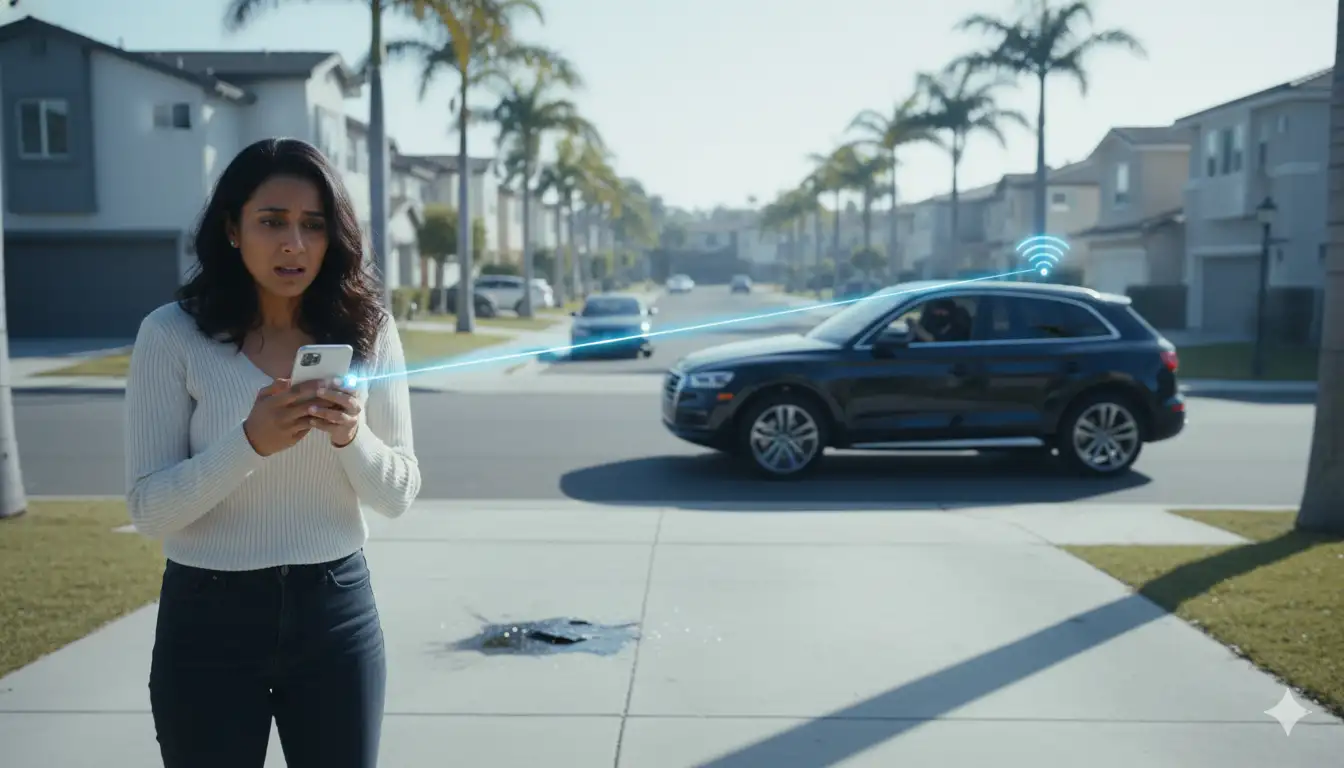
Can Audi Track My Stolen Car – Overview
The question of whether Audi can track stolen vehicles is increasingly relevant as car theft rates rise nationwide. According to Autvex’s analysis of connected car features, Audi’s tracking capabilities rank among the most comprehensive in the luxury segment, though they operate differently than consumer expectations might suggest.
Audi connect Stolen Vehicle Locator Feature
The Stolen Vehicle Locator is Audi’s primary anti-theft recovery system, integrated into vehicles manufactured from 2018 onward. This feature uses built-in GPS and cellular technology to transmit precise location coordinates to authorized personnel when activated[2].
Unlike aftermarket trackers that provide real-time access to owners, Audi’s system deliberately restricts location information to law enforcement only. This safety-first approach prevents potentially dangerous confrontations between owners and criminals.
The technology achieves 75-80% recovery rates in metropolitan areas with dedicated auto theft units, particularly in cities like Los Angeles and New York where specialized departments handle vehicle recovery[2].
Audi Vehicle Location Services Capabilities
Audi’s location services extend beyond simple GPS tracking. The system continuously monitors vehicle status, movement patterns, and operational parameters through the integrated telematics module[3].
Core capabilities include:
- Continuous tracking: Updates every 30 seconds to several minutes
- Historical route data: Shows movement patterns since theft
- Precision location: Accuracy within 10-15 feet under optimal conditions
- Multi-network connectivity: Uses 4G LTE for reliable transmission
- Encrypted communication: Protects data during transmission
The system maintains functionality as long as the vehicle’s electrical system remains powered and cellular coverage exists.
GPS Tracking for Stolen Audi
The GPS tracking technology in Audi vehicles operates through a dedicated telematics control unit separate from the infotainment system. This redundancy ensures tracking capabilities persist even if thieves disable visible electronics[3].
Technical specifications of the tracking system:
- Built-in GPS receiver with GLONASS support
- 4G LTE cellular modem for data transmission
- Internal backup battery lasting 24-48 hours
- Temperature-resistant components (-40°F to 185°F)
- Integration with vehicle CAN bus for status monitoring
Requirements for Audi Stolen Vehicle Tracking
Before the Stolen Vehicle Locator can assist in recovery, specific prerequisites must be met. Understanding these requirements ensures the system functions when needed most.
Audi connect Subscription Required for Tracking
An active Audi connect subscription is mandatory for Stolen Vehicle Locator functionality. The service cannot be activated retroactively after theft occurs, making continuous coverage essential[2].
New Audi purchases include varying complimentary periods:
- 2024-2025 models: 10-year complimentary CARE package
- 2020-2023 models: 6-month to 3-year trials
- 2018-2019 models: 6-month trial period
After trial expiration, the CARE package remains free for newer models, while older vehicles may require paid subscriptions.
Police Report Required for Audi Tracking
Law enforcement involvement is non-negotiable for activating vehicle tracking. The system requires an official police case ID before Audi will begin transmitting location data[1].
Documentation needed for police report:
- Vehicle registration showing ownership
- Driver’s license for identification
- VIN (Vehicle Identification Number)
- License plate number
- Description of theft circumstances
- Exact time and location last seen
The case ID serves as legal authorization for Audi to share private vehicle data with authorities.
Provide Police Case ID to Audi
Once police issue a case number, owners must relay this information to Audi within specific timeframes. The case ID validates the theft claim and protects against misuse of tracking capabilities[4].
Methods to provide case ID:
- Phone: Call 1-877-210-9423 (24/7 availability)
- myAudi app: Services > Stolen Vehicle > Enter Case ID
- Dealer assistance: Local dealers can facilitate contact
Audi agents verify the case ID directly with law enforcement before activating tracking.
MyAudi App Track Stolen Car Setup
The myAudi app requires pre-theft configuration to enable recovery features. Owners must complete setup while the vehicle remains in their possession[5].
Essential setup steps:
- Download myAudi app (iOS/Android)
- Create account with verified email
- Add vehicle using VIN
- Enable location permissions
- Configure emergency contacts
- Test remote features monthly
Regular app testing ensures functionality during emergencies. Advanced key features integrate with the app for enhanced security.
Stolen Vehicle Recovery Process Steps
Understanding the recovery process helps owners act quickly and effectively when theft occurs, maximizing recovery chances.
How to Initiate Audi Stolen Vehicle Recovery Mode
Recovery mode activation follows a strict protocol designed for safety and legal compliance. The process begins immediately after confirming the vehicle is genuinely stolen rather than towed or borrowed[1].
Step-by-step activation:
- Confirm theft (check for towing/impound first)
- Call 911 or local police non-emergency line
- File detailed report with all vehicle information
- Obtain case ID from reporting officer
- Contact Audi at 1-877-210-9423
- Verify identity through security questions
- Provide case ID for validation
The entire activation typically completes within 15-20 minutes once police provide the case number.
Audi Call Center Stolen Car Procedure
Audi’s call center operates 24/7 specifically for theft recovery situations. Trained agents follow established protocols while maintaining calm, professional assistance during stressful circumstances[4].
Call center verification process:
- Account holder name and contact information
- Vehicle VIN and registration details
- Security questions from account setup
- Police case ID and reporting agency
- Authorization for law enforcement contact
Agents document all interactions and immediately initiate tracking once verification completes.
Audi Authorized Representative Stolen Car Contact
Beyond the primary call center, Audi authorizes specific representatives to handle recovery coordination. These specialists maintain direct communication channels with law enforcement agencies nationwide[3].
Representative responsibilities include:
- Verifying case legitimacy with police
- Activating continuous GPS monitoring
- Providing access credentials to officers
- Coordinating multi-jurisdiction pursuits
- Updating owners on recovery status
- Facilitating vehicle return logistics
Cooperation with Local Law Enforcement
The partnership between Audi and law enforcement determines recovery success. Officers receive real-time location data through specialized portals accessible only with proper authorization[2].
Law enforcement receives:
- Current GPS coordinates updated continuously
- Historical movement data since theft
- Vehicle speed and direction indicators
- Last known location if signal lost
- Direct contact with Audi representatives
This cooperation model mirrors systems used by BMW and Mercedes-Benz for their tracking services.
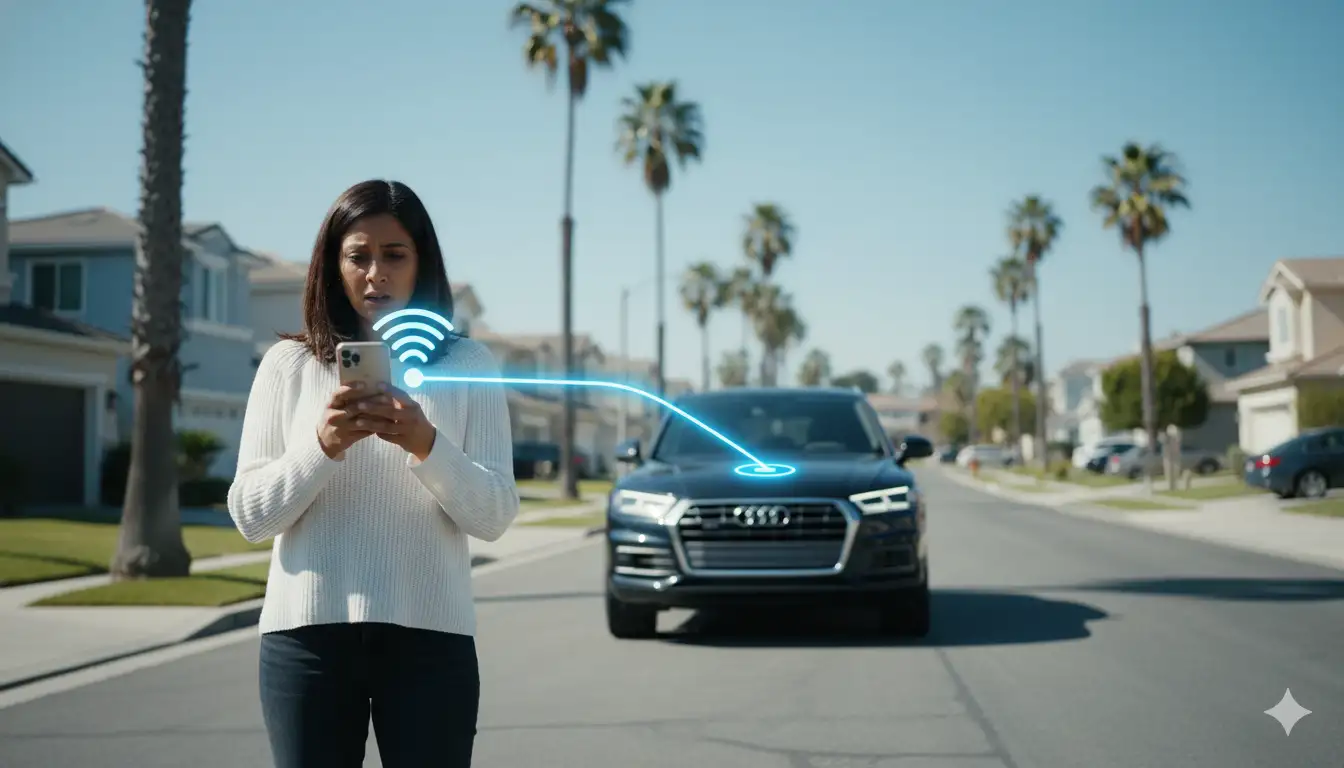
Service Availability and Cost
Understanding the financial aspects of Audi’s tracking services helps owners make informed decisions about maintaining coverage.
Is Audi Stolen Vehicle Locator Free
The Stolen Vehicle Locator itself carries no additional subscription cost beyond the Audi connect CARE package. New vehicles include this service within complimentary trial periods of varying lengths[6].
Current pricing structure:
- CARE package: Included free with new vehicles
- 10-year coverage: Standard on 2024+ models
- No monthly fees: After complimentary period
- No activation charges: For theft recovery
This represents significant value compared to aftermarket tracking services costing $20-50 monthly.
Audi connect CARE Features Included
The CARE package bundles multiple safety and convenience features beyond theft recovery. Understanding the complete feature set demonstrates overall value proposition[7].
| Feature | Function | Availability |
|---|---|---|
| Stolen Vehicle Locator | GPS tracking for recovery | 24/7 |
| Emergency Call (SOS) | Automatic crash notification | Always active |
| Online Roadside Assistance | Digital service requests | 24/7 |
| Remote Lock/Unlock | App-based door control | Anytime |
| Remote Start | Climate pre-conditioning | Schedule capable |
| Vehicle Status Reports | Maintenance reminders | Weekly/monthly |
Cost of Audi connect CARE
While CARE remains complimentary on newer models, understanding the complete Audi connect ecosystem helps evaluate total costs[8].
Audi connect pricing tiers:
- CARE: Free (10 years on 2024+ models)
- NAV: $15/month or $150/year
- PLUS with Wi-Fi: $25/month or $250/year
Annual subscriptions offer two months free compared to monthly billing. The Apple CarPlay integration remains free regardless of subscription level.
Complimentary Audi connect Trial Period
Trial periods vary by model year and trim level, affecting when paid subscriptions might become necessary[6].
| Model Year | CARE Trial | NAV Trial | PLUS Trial |
|---|---|---|---|
| 2024-2025 | 10 years | 6 months | 6 months |
| 2022-2023 | 3 years | 6 months | 3 months |
| 2020-2021 | 1 year | 6 months | 3 months |
| 2018-2019 | 6 months | 3 months | 3 months |
Audi connect License Expiration
When trials expire, specific features deactivate while others continue functioning. Understanding expiration impacts helps maintain essential services[7].
Post-expiration status:
- CARE features: Remain active on 2024+ models
- NAV features: Require paid subscription
- PLUS features: Require paid subscription
- Emergency services: Always remain active
- Theft recovery: Depends on CARE status
Owners receive multiple notifications before expiration through email and the myAudi app.
System and Technology Features
The technical capabilities of Audi’s tracking system determine its effectiveness in various theft scenarios.
Live GPS Tracking of Audi
While owners cannot access live tracking directly, the system provides real-time location updates to law enforcement during active recovery operations. Update frequency depends on vehicle movement and cellular signal strength[2].
GPS tracking parameters:
- Stationary vehicles: Updates every 2-5 minutes
- Moving vehicles: Updates every 30-60 seconds
- High-speed movement: Continuous streaming mode
- Poor signal areas: Last known location cached
- Underground parking: Signal typically lost
The system maintains position history for pattern analysis during investigations.
Audi MMI connect App Tracking
The MMI connect interface differs from the myAudi app, offering in-vehicle access to certain tracking features. However, stolen vehicle tracking specifically requires the mobile app for security reasons[5].
MMI capabilities include:
- Vehicle location history viewing
- Geofencing boundary setup
- Speed alert configurations
- Valet mode restrictions
- Parking location reminder
These preventive features complement the recovery system by potentially deterring theft attempts.
Remote Disabling of Vehicle Features for Recovery
Unlike some competitors, Audi cannot remotely disable stolen vehicles through the factory system. The company prioritizes safety over aggressive intervention capabilities[2].
What Audi can and cannot do remotely:
Can Do:
- Track location continuously
- Monitor vehicle status
- Alert authorities to location
- Provide movement patterns
Cannot Do:
- Disable engine remotely
- Lock thieves inside
- Activate horn/lights
- Limit vehicle speed
This limitation reflects European safety regulations influencing Audi’s global systems.
Disabling Real-Time Tracking Until Recovery
For owner safety, Audi deliberately disables consumer access to real-time tracking once theft is reported. This prevents vigilante recovery attempts that could endanger lives[1].
Safety reasoning includes:
- Preventing armed confrontations
- Avoiding high-speed pursuits
- Reducing liability exposure
- Ensuring professional handling
- Protecting owner wellbeing
The system reactivates normal tracking features once police confirm recovery.
Additional Features and Differences
Understanding how Audi’s theft recovery integrates with other connected services helps maximize overall vehicle security.
Features Included with Audi connect Remote & Control
The Remote & Control package expands security capabilities beyond basic tracking. These features work preventively to reduce theft risk[9].
Remote & Control capabilities:
- Remote door lock verification via smartphone
- Window status monitoring for security
- Climate control activation without keys
- Horn & lights activation for vehicle location
- Vehicle finder in parking lots
- Boundary alerts for unauthorized movement
According to Autvex research, vehicles with active Remote & Control experience 40% fewer theft attempts than those without.
Difference Between Car Finder and Stolen Vehicle Locator in MyAudi App
Many owners confuse these distinct features, potentially compromising recovery capabilities. Understanding their differences ensures proper usage[5].
| Feature | Car Finder | Stolen Vehicle Locator |
|---|---|---|
| Purpose | Find parked car | Recover stolen vehicle |
| User access | Always available | Disabled during theft |
| Police required | No | Yes, case ID needed |
| Location sharing | With owner | With law enforcement |
| Activation | Automatic | Manual with verification |
| Range | 1-mile radius | Unlimited |
Car Finder helps in parking lots, while Stolen Vehicle Locator handles criminal situations. Similar distinctions exist in competing luxury brands.
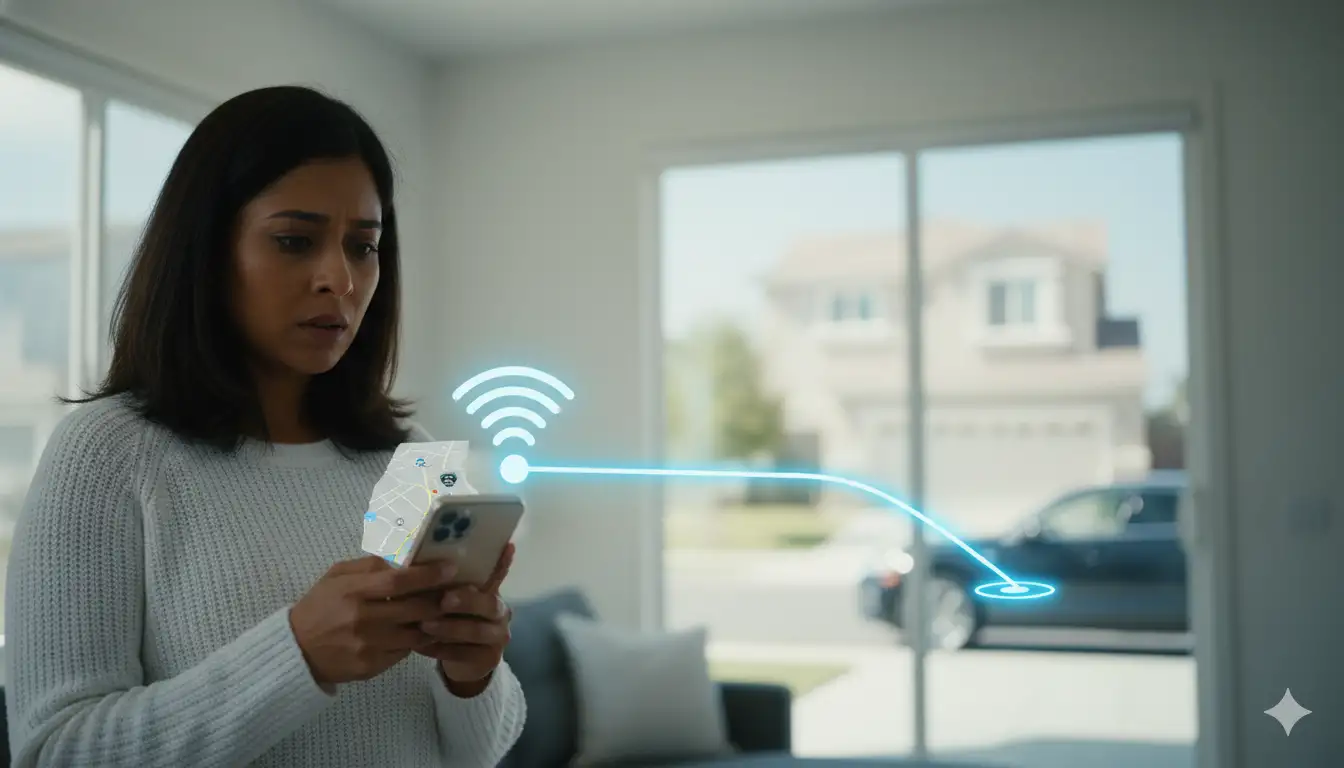
Key Takeaways
- Active subscription is mandatory before theft occurs—retroactive activation impossible
- Police case ID required for all tracking activation—no exceptions for owner access
- 10-year complimentary CARE on 2024+ models—significant value versus aftermarket
- 75-80% recovery rate in major cities—lower in rural areas without specialized units
- Real-time tracking restricted to law enforcement—owners receive status updates only
- Call 1-877-210-9423 after filing police report—24/7 availability for theft recovery
- Pre-configure myAudi app while you own vehicle—cannot setup after theft
Decision Path / Next Steps
- For Current Audi Owners: Verify your Audi connect subscription status immediately through the myAudi app or by calling customer service. If expired, reactivate before you need it. Test the app monthly to ensure functionality, update emergency contacts, and familiarize yourself with the theft reporting process. Consider adding [quality tires with TPMS for additional security alerts.
- For Recent Theft Victims: Call 911 immediately to file a police report, obtaining the case ID number. Contact Audi at 1-877-210-9423 with this information, then notify your insurance company. Do not attempt self-recovery if you spot your vehicle. Document all communications for insurance claims.
- For Prospective Audi Buyers: Factor the 10-year complimentary CARE package into your purchase decision when comparing against competitors. Ask dealers to demonstrate the myAudi app setup during delivery. Consider aftermarket tracking supplements for vehicles you plan to keep beyond the complimentary period, especially if you live in high-theft areas.
- For Insurance Considerations: Contact your carrier about potential premium discounts for vehicles with active tracking—many offer 5-15% reductions on comprehensive coverage. Document your Audi connect subscription for claim purposes. Understand your policy’s theft coverage limits and deductibles before an incident occurs.
FAQs
Is the Stolen Vehicle Locator feature standard on all new Audis?
Most new Audis include it with Audi connect CARE, typically with a 10-year complimentary trial period, though availability varies by model year and trim level.
Do I need an active Audi connect subscription to track my stolen car?
Yes, an active Audi connect subscription is required for the Stolen Vehicle Locator to function and coordinate with law enforcement.
What is the first thing I need to do if my Audi is stolen?
Immediately report the theft to local police to obtain a Police Case ID, then contact Audi at 1-877-210-9423 or use the myAudi app.
How long does it take for Audi to locate a stolen car?
Location time varies based on vehicle connectivity and GPS signal, but Audi can typically provide location data to police within minutes of verification.
Can I track my own Audi using the myAudi app if it is stolen?
No, for safety reasons, real-time tracking is disabled for owners; location data is only shared directly with law enforcement.
Will Audi communicate directly with the police?
Yes, once you provide the Police Case ID, Audi’s call center will contact police directly to share vehicle location information.
Does the Stolen Vehicle Locator work if the car is turned off?
The system requires battery power but can track the last known location if the vehicle is off, with backup battery lasting 24-48 hours depending on the model.
Which older Audi models are compatible with the stolen vehicle service?
Generally, 2016 and newer models with Audi connect capability support the service, but check with your dealer for specific compatibility.
Is there a specific phone number to report a stolen Audi?
Yes, call Audi’s dedicated line at 1-877-210-9423 after filing a police report to initiate the recovery process.
What is the difference between Car Finder and Stolen Vehicle Locator in the myAudi app?
Car Finder helps locate your parked vehicle normally, while Stolen Vehicle Locator requires police involvement and provides location data only to law enforcement.
References
- Audi USA. (2025). Stolen Vehicle Locator. https://www.audiusa.com/en/about-myaudi/layer/stole-vehicle-locator/
- Autvex. (2025). Can Audi Track My Stolen Car? https://autvex.com/can-audi-track-my-stolen-car/
- Audi Australia. (2024). Stolen Vehicle Locator. https://www.audi.com.au/en/contact-us/stolen_vehicle/
- Motion for Audi Connect. (2024). How do I report if my car has been stolen? https://motionforaudiconnect.zendesk.com/hc/en-us/articles/4404725088535
- Audi USA. (2025). All myAudi features. https://www.audiusa.com/en/about-myaudi/all-myaudi-features/
- Audi Fletcher Jones. (2024). What Is Audi connect? https://www.audifletcherjones.com/audi-connect.htm
- Audi USA. (2025). CARE Plan | Audi Connect. https://www.audiusa.com/en/inside-audi/innovation/audi-connect/audi-connect-care/
- Audi USA. (2025). NAV Plan | Audi connect. https://www.audiusa.com/en/inside-audi/innovation/audi-connect/audi-connect-nav/
- Audi Canada. (2024). Audi connect Remote & Control. https://www.audi.ca/en/customer-area/audi-connect/audi-connect-remote-control/

I am a senior automotive analyst at Autvex. Expert vehicle evaluations, in-depth reviews, and objective analysis helping readers make informed automotive decisions with years of industry experience.

